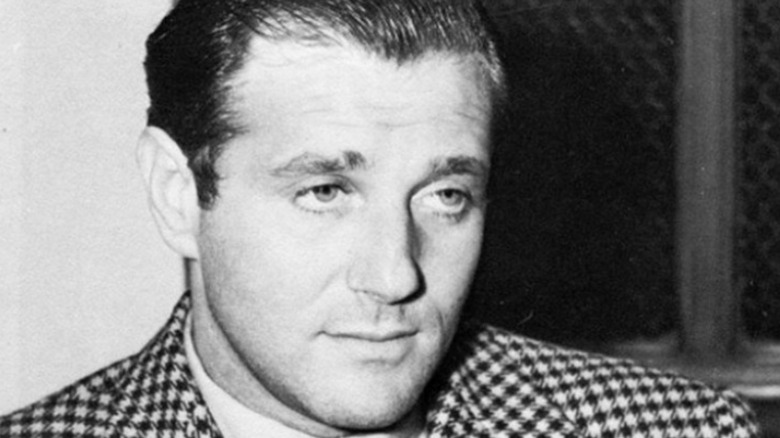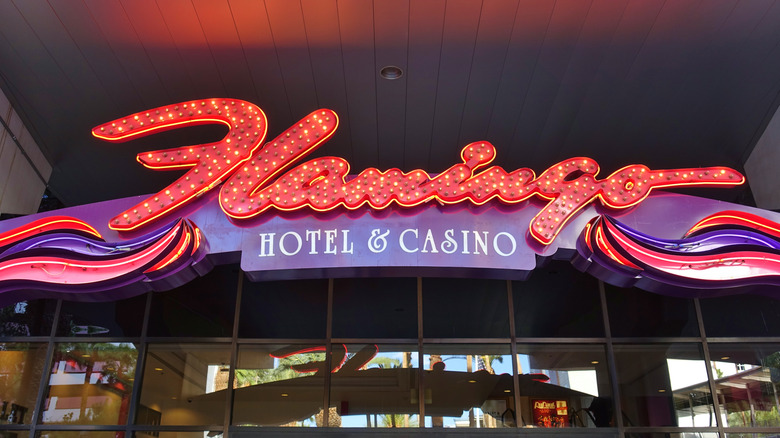The Mystery Behind Bugsy Siegel's Death
Perhaps no city in the United States is as tied to organized crime as Las Vegas, Nevada. Sure, Chicago still bears Al Capone's indelible mark, and in and around New York, the Mob is still very much a thing. But Sin City, on the other hand, in a large way owes its very existence to an influx of money and influence from organized crime, as The Las Vegas Review-Journal notes. For a time in the 1940s through the 1960s, mob money — and related crime — was a daily part of life on the Las Vegas Strip, and the city's leaders do not shy away from admitting the town's shady past. "The general perception on the part of the public is that Las Vegas and the mob have been inextricably linked, and I don't think it will ever be extricated," says former Nevada state archivist Guy Rocha.
One of the mafia-connected men whose money helped build Vegas was Benjamin "Bugsy" Siegel. By 1946, he had purchased and/or possibly muscled his way into the ownership of the Flamingo, and promptly lost untold amounts of other people's money. By 1947, he was dead, a victim of horrific violence, and to this day his murder remains unsolved.
Was Bugsy Siegel killed for money or love?
By the time the Flamingo opened, Siegel had spent his investors' money so willy-nilly, and had managed the operation so ineptly, that by opening night the hotel was already an unqualified disaster. What's more, it was a disaster that left Siegel and his investors millions of dollars in the red, according to Las Vegas Strip History. The number of violent and powerful men — men who had plenty of hired muscle in their employ — who wanted to discuss things with Siegel was, by this time, quite lengthy.
On June 20, 1947, according to The Mob Museum, Siegel had taken up residence in Beverly Hills, at the home of his girlfriend, Virginia Hill. During the night, a sniper took a position outside the home and fired nine rounds into the room, four of which struck Siegel, two in the head. A friend who was also in the room at the time escaped injury. Siegel was 41 years old.
Throwing a wrench into the idea that Siegel's death was a mob hit due to money losses is the fact that Siegel did, in fact, manage to turn things around in the few months following the Flamingo's disastrous opening, and the hotel was showing a profit at the time of Siegel's death. What's more, not long before he died, Hill's brother had reportedly threatened the mobster. Siegel had beaten Virginia, and a different Hill brother had been spotted around Beverly Hills around the time that Siegel died.

